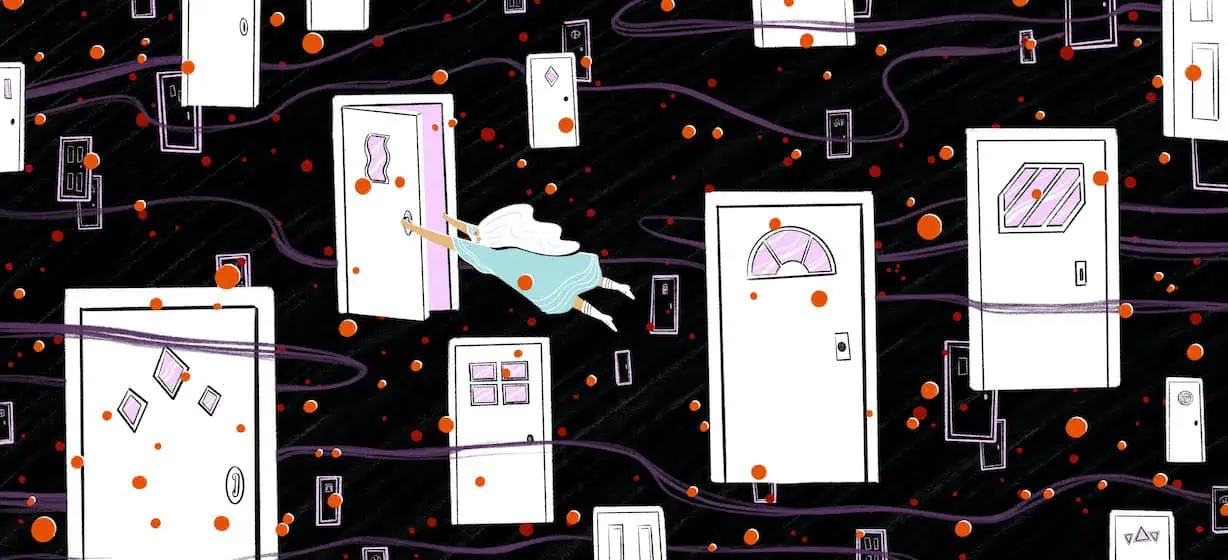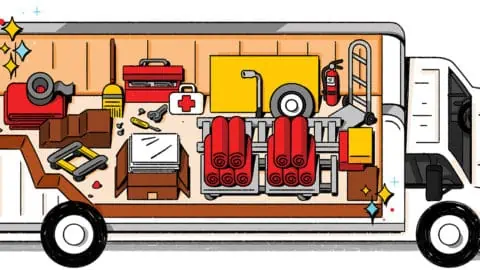Millions Moved During Covid, Here’s How That’s Working Out
Posted in: I'm Moving, Moving AdviceWhile lockdowns kept us in one place during the COVID pandemic, many Americans still moved during this global crisis—many, because of it.
Among those surveyed who moved in 2020, 25% report their move was due in some part to the pandemic, per the HireAHelper American Migration Report. Respondents say their reasons for moving varied, from financial hardships, to downsizing their living arrangements, to a growing need to look after their families.
While we’re still in the middle of a pandemic, the U.S. appears to be on a path to recovery. Many Americans are choosing to get vaccinated (though the percentages remain alarmingly skewed by political affiliation), lockdowns and mask mandates have lifted in many communities, and employees are returning to previously closed worksites.
Looking back over the span of the pandemic thus far, how have so-called “pandemic moves” worked out for those who made them?
To find out, HireAHelper spoke to people who moved during the pandemic to get a closer look at the unique obstacles and opportunities that drove their decisions to move.
The Challenges of Deciding to Move During COVID
A pandemic hardly creates the ideal circumstances for a dream move. Those who moved due to situations caused by COVID were slightly more likely to have regrets about their move (31%) compared to those who moved for other reasons (30%). (See the data here.)
But while there were many reported negatives to moving in 2020, it’s not all regrets, either. People reported many ways the pandemic changed the landscape of their lives overnight, including ways that introduced new pressures, challenges, and obstacles—as well as rare and fortuitous opportunities.
The Tense Household Relationships
As lockdowns took effect, many households reported their living arrangements were thrown into chaos and upheaval.
College students and adult children moved back in with their parents. Parents of young children struggled without child care. Couples who were now working from home together suddenly had to navigate being officemates, as well as roommates and partners.
“Among those surveyed who moved in 2020, 25% report their move was due in some part to the pandemic.”
“I wasn’t doing well at home in quarantine,” admits Darlena Phan, a 26-year-old accountant. She and her fiance were living with her parents in order to save money. This placed them in Huntington Beach, CA when the government COVID lockdowns began. “Not sure why, but the family dynamics really deteriorated and I couldn’t stand being around my parents 24/7 anymore.”
Darlena and her fiance had been saving towards a down payment to buy a home in 2022. But these new family conflicts pushed the couple to consider sliding their move date up, despite their unreadiness.
Others found their partnerships were struggling to bear the new pressures of pandemic living. Dating site Dating.com reports that two-thirds of its current users experienced a breakup in 2020.
Dannie Fountain, an HR professional living in Chicago, began the lockdowns living with her then-partner. But the mounting pressures and stress associated with the pandemic led the romantic partnership to “implode,” Dannie says. By May 2020, the relationship was over, and Dannie was forced into actively searching for her own place.
Reported Uncertainty Around Work Arrangements
Moving during the COVID-19 pandemic also meant making big work decisions—without the usual information needed to do so.
Those considering a move reported having to navigate unclear remote work policies, worries about furloughs and layoffs, and even uncertainties around unemployment benefits.
With work and living arrangements disrupted and thrown up in the air, people considering a move were left to make that decision based on nothing more than guesswork.
Maxwell and Steph Miller had long wanted to move out of Utah to a more progressive state, where they hoped to also buy a home. When Maxwell’s job as a web developer transitioned into a work-from-home position, they saw an opportunity to finally make the move of their dreams: relocating to the northwest, to Vancouver, WA.
“Her breaking point came after a ‘huge’ Halloween party another tenant held in the courtyard, with no masks and counter to citywide safety precautions.
‘I needed to leave the apartment to go grocery shopping, and literally had to walk by at least 20 people in close-body contact,’ she says.”
But while Maxwell’s employer committed to remaining remote through summer 2021, the work-from-home policy was still temporary with no permanent exceptions. This complicated the home buying process for the Millers when their loan was outright denied due to the company’s unclear policy.
“Everything about this move has been out on a limb,” Maxwell says. “There have been no guarantees.” Though the couple was able to secure lending to buy their townhome shortly thereafter, there remains a chance Maxwell’s employer could end its remote policy—leaving him looking for a new job in a new city.
Fountain faced similar frustrations when shopping for an apartment after her breakup. Her employer now operated remotely, and originally planned to be back in-office by July 2020. Because of the open-ended remote work policy, Dannie prioritized commutability when searching for an apartment—even though she has not been required to return to the office since.
COVID Safety Concerns and Measures

It was this feeling of unsafety that led Fountain to her second Covid-related move—just six months after her first. As a young professional, she had chosen a cohabitated apartment complex with a private room, yet shared common spaces.
Within a few weeks of moving in, however, Dannie realized her complex was not enforcing COVID safety regulations. Due to this, she often felt uncomfortable leaving her room to use the shared living spaces, unsure if she could maintain a safe distance from roommates, or if the rooms were being properly sanitized.
Her breaking point came after a “huge” Halloween party another tenant held in the courtyard, with no masks and counter to citywide safety precautions. “I needed to leave the apartment to go grocery shopping, and literally had to walk by at least 20 people in close-body contact,” she says.
Dannie complained to the property managers and was told there was nothing they could do. She decided it was time to look for a new, safer situation—she found a new apartment by November 2020, months later.
The Hidden Opportunities of Moving During COVID-19
Dannie, Darlena and Maxwell all expressed that moving during COVID was more stressful. But this crisis also opened up rare opportunities to achieve their goals, including moving to their dream locations, or buying their first homes.
While the economy as a whole struggled in 2020, many individual households reported being financially healthy during the pandemic. Stimulus checks and expanded unemployment benefits boosted some households’ cash savings. On top of that, historically low interest rates on homeownership in America made this a prime time to get a mortgage, while many housing markets offered previously unheard-of deals on rental rates.
Fountain dreamed of living in a specific, well-located, higher-end apartment complex in Chicago. But with studio apartments leasing for $3,000 per month within this complex, it was simply outside her budget, pre-pandemic.
After her first COVID move, however, Dannie decided to check again and discovered the rental rates of this apartment complex had dropped 60% to just $1,200 a month. Thrilled, Dannie signed a lease—and her dream apartment became her reality.
For Darlena Phan and her fiance, low mortgage rates made it possible to buy their first home in Riverside, CA earlier than planned. “We only had 10% down, but we calculated that we would save more money with the lower interest rate than (by) avoiding (private mortgage insurance),” she points out.
Government stimulus checks helped boost Maxwell and Steph’s savings, and new remote work policies made it possible for them to qualify for a mortgage without switching jobs. Combined, these unique circumstances gave the Millers room to plan and pay for their move across state lines, a situation not possible before COVID-related policies.
The relocators we spoke to largely agreed that their decisions to move, even during COVID, were worth it. People moving by and large report that their COVID-timed move was a net positive; among those surveyed who moved during the past year, 82% say it improved their life for the better.
“It was 100% worth it because the cost of everything has simply gone up,” Maxwell admits. “If we hadn’t done it then, it would never have happened.”




